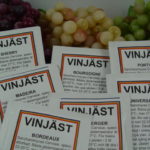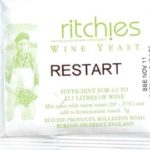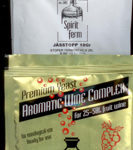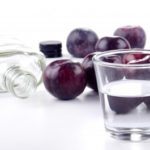Wina wzmacniane
Powszechnie dostępne wina mają do kilkunastu procent alkoholu
W sprzedaży dostępne są jednak również wina o zawartości alkoholu około 17-21%. Są to wina wzmacniane. Ogólna zasada ich wywarzania jest prosta: naturalną fermentację przerywa się poprzez dolanie mocnego alkoholu – szlachetne drożdże winne giną przy stężeniu 10-11%, drożdże dzikie przy stężeniu 6-10%, wyższe stężenia wytrzymują jedynie drożdże gorzelnicze/ drożdże gorzelniane.
Wino wzmacniane produkowano, ponieważ tradycyjny trunek jest niezbyt trwały
Krótka trwałość win była już poważną przeszkodą, jeśli chce się je przewieźć na drugi koniec Świata, który w dodatku okazał się być znacznie dalej, niż przypuszczano. Spośród wielu gatunków win wzmacnianych kilka z nich  zdobyło sobie większe uznanie: sherry, porto, madera i marsala. Gatunki te różnią się od siebie przede wszystkim zawartością cukru resztkowego. Kiedy fermentacja zostaje zatrzymana przez dodanie mocniejszego alkoholu (na przykład brandy), pewna część cukru z moszczu nie jest jeszcze przefermentowana – nadaje on trunkowi słodszy smak. Podobną słodycz, ale oczywiście inne walory smakowe, można uzyskać, jeśli doda się moszczu do wina zatrzymanego w późniejszym okresie fermentacji.
zdobyło sobie większe uznanie: sherry, porto, madera i marsala. Gatunki te różnią się od siebie przede wszystkim zawartością cukru resztkowego. Kiedy fermentacja zostaje zatrzymana przez dodanie mocniejszego alkoholu (na przykład brandy), pewna część cukru z moszczu nie jest jeszcze przefermentowana – nadaje on trunkowi słodszy smak. Podobną słodycz, ale oczywiście inne walory smakowe, można uzyskać, jeśli doda się moszczu do wina zatrzymanego w późniejszym okresie fermentacji.
Oczywiście wino wzmocnione to nie jest po prostu mieszanina wina z winiakiem albo wódką. Taki produkt również musi dojrzewać, a także często stosuje się inne zabiegi, na przykład tak jak w przypadku sherry, mieszanie trunków z różnych roczników.
Teraz zadanie specjalne: idź do sklepu i znajdź tam na półce wina wzmacniane. Nie będzie to łatwe, chyba że szukasz w Wielkiej Brytanii. Choć receptura trunku ma kilkaset lat, komuś wybitnie przeszkadzała ta nazwa, więc nazwy handlowe to wino deserowe (tak nazywa się tego rodzaju alkohole w Stanach) albo wino likierowe (to nazwa w UE, która hańbi zresztą równocześnie i wina, i likiery). Takie też etykiety spotyka się oczywiście w Polsce. I choć hasło na etykiecie się zmieniło, popularność produktu została.








